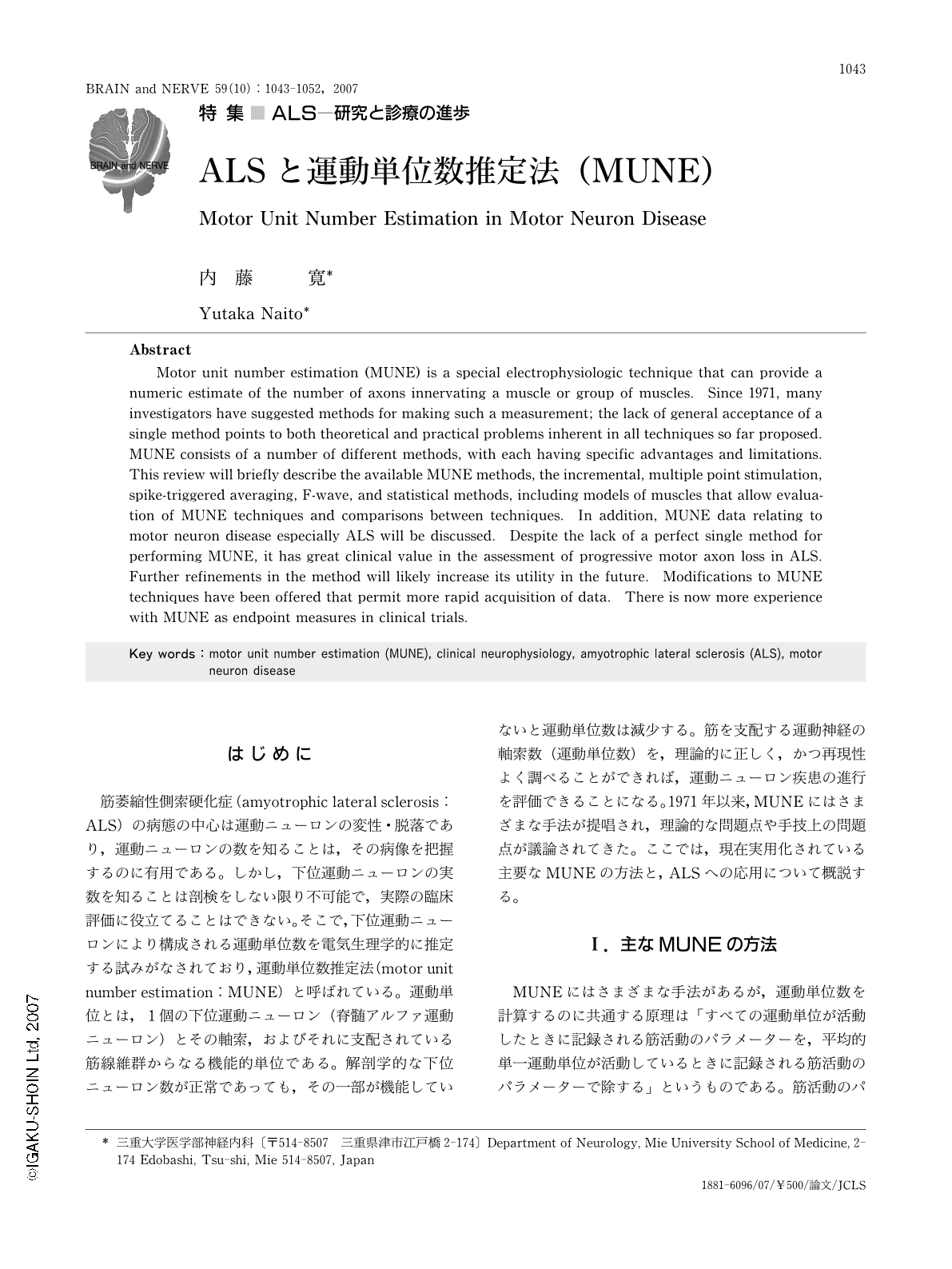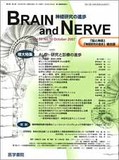Japanese
English
- 有料閲覧
- Abstract 文献概要
- 1ページ目 Look Inside
- 参考文献 Reference
はじめに
筋萎縮性側索硬化症(amyotrophic lateral sclerosis:ALS)の病態の中心は運動ニューロンの変性・脱落であり,運動ニューロンの数を知ることは,その病像を把握するのに有用である。しかし,下位運動ニューロンの実数を知ることは剖検をしない限り不可能で,実際の臨床評価に役立てることはできない。そこで,下位運動ニューロンにより構成される運動単位数を電気生理学的に推定する試みがなされており,運動単位数推定法(motor unit number estimation:MUNE)と呼ばれている。運動単位とは,1個の下位運動ニューロン(脊髄アルファ運動ニューロン)とその軸索,およびそれに支配されている筋線維群からなる機能的単位である。解剖学的な下位ニューロン数が正常であっても,その一部が機能していないと運動単位数は減少する。筋を支配する運動神経の軸索数(運動単位数)を,理論的に正しく,かつ再現性よく調べることができれば,運動ニューロン疾患の進行を評価できることになる。1971年以来,MUNEにはさまざまな手法が提唱され,理論的な問題点や手技上の問題点が議論されてきた。ここでは,現在実用化されている主要なMUNEの方法と,ALSへの応用について概説する。
Abstract
Motor unit number estimation (MUNE) is a special electrophysiologic technique that can provide a numeric estimate of the number of axons innervating a muscle or group of muscles. Since 1971, many investigators have suggested methods for making such a measurement; the lack of general acceptance of a single method points to both theoretical and practical problems inherent in all techniques so far proposed. MUNE consists of a number of different methods, with each having specific advantages and limitations. This review will briefly describe the available MUNE methods, the incremental, multiple point stimulation, spike-triggered averaging, F-wave, and statistical methods, including models of muscles that allow evaluation of MUNE techniques and comparisons between techniques. In addition, MUNE data relating to motor neuron disease especially ALS will be discussed. Despite the lack of a perfect single method for performing MUNE, it has great clinical value in the assessment of progressive motor axon loss in ALS. Further refinements in the method will likely increase its utility in the future. Modifications to MUNE techniques have been offered that permit more rapid acquisition of data. There is now more experience with MUNE as endpoint measures in clinical trials.

Copyright © 2007, Igaku-Shoin Ltd. All rights reserved.


